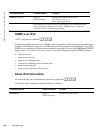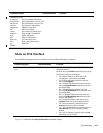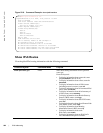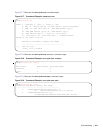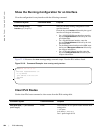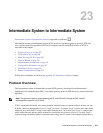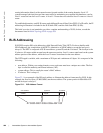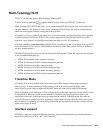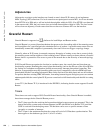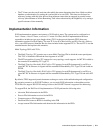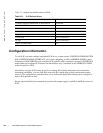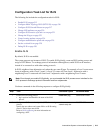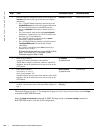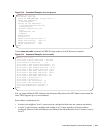
508 | Intermediate System to Intermediate System
www.dell.com | support.dell.com
routing information directly with external routers located outside of the routing domains. Level 1-2
systems manage both inter-area and intra-area traffic by maintaining two separate link databases; one for
Level 1 routes and one for Level 2 routes. A Level 1-2 router does not advertise Level 2 routes to a Level 1
router.
To establish adjacencies, each IS-IS router sends different Protocol Data Units (PDU). For IP traffic, the IP
addressing information is included in the IS-IS hello PDUs and the Link State PDUs (LSPs).
This brief overview is not intended to provide a complete understanding of IS-IS; for that, consult the
documents listed in Multi-Topology IS-IS on page 509.
IS-IS Addressing
IS-IS PDUs require ISO-style addressing called Network Entity Title (NET). For those familiar with
NSAP addresses, the composition of the NET is identical to an NSAP address, except the last byte is
always 0. The NET is composed of IS-IS area address, system ID, and the N-selector. The last byte is the
N-selector. All routers within an area have the same area portion. Level 1 routers route based on the system
address portion of the address, while the Level 2 routers route based on the area address.
The NET length is variable, with a maximum of 20 bytes and a minimum of 8 bytes. It is composed of the
following:
• area address. Within your routing domain or area, each area must have a unique area value. The first
byte is called the authority and format indicator (AFI).
• system address. This is usually the router’s MAC address.
• N-selector. This is always 0.
Figure 23-1 is an example of the ISO-style address to illustrate the address format used by IS-IS. In this
example, the first five bytes (47.0005.0001) are the area address. The system portion is 000c.000a.4321
and the last byte is always 0.
Figure 23-1. ISO Address Format
variable 6 bytes 1 byte
FN00060a
47.0005.0001.000c.000a.4321.00
N-selector
system-id
area address



